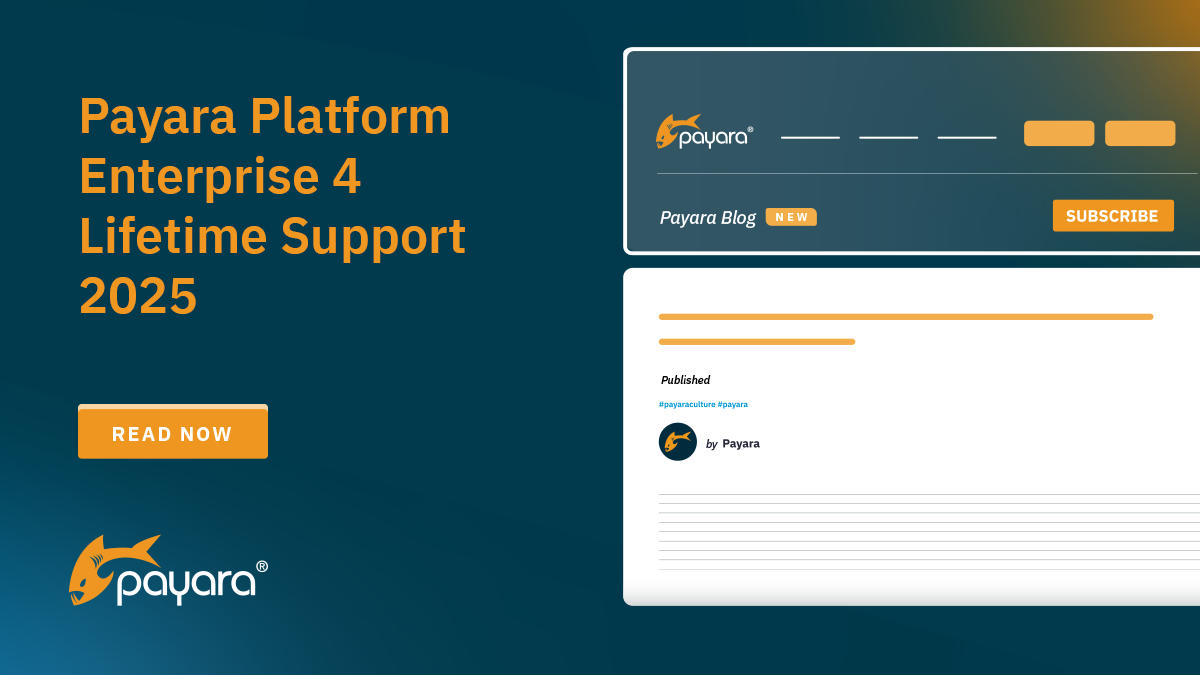 3 minutes
3 minutes
End-of-Life Technology: How to Drive Innovation Without Compromising Stability
When legacy systems approach end-of-life (EOL), enterprise IT teams typically face the choice of moving forward at all costs […]

Payara Platform 4 is reaching its End of Life, and the end of Extended Support is scheduled for the first quarter of 2025.
However, we understand there are critical business reasons for which some of our customers cannot immediately transition some workloads to newer versions of the platform. To meet your legitimate business requirements, we are introducing the Lifetime Support model. This new offer replaces the Extended Support offering for this version and is designed to give you confidence that your business-critical applications will have enterprise level support to remain stable and secure during this transition period.
This is your advance notice so that you can begin making plans to secure support for your existing infrastructure or to upgrade to Payara Platform 5 or 6.
If you want to remain on Payara Platform 4, you will need to buy a subscription to Lifetime Support. This means we can continue to provide you with support for existing and future tickets.
In addition:
Talk to your Customer Success Manager or sales@payara.fish at Payara for further information.
Once the corresponding JDK 8 version reaches its End of Life, you will receive support if you upgrade to the next supported major JDK version
Remember that the scope of Azul Platform Core Support is changing:
For further information, see the Azul Product Roadmap.
Depending on where you’re starting, we have various pieces of information you’ll need so that you know what this means for you.
This table lists and explains the ideal and alternative options depending on your status.
|
Current Status |
Ideal Upgrade |
Alternative Upgrade |
|
Payara Server Community 4 |
Payara Server Enterprise 4 with Lifetime Support | |
|
Payara Server Community 5 |
Payara Server Enterprise 6 |
Payara Server Enterprise 5 |
|
Payara Server Enterprise 4 |
Payara Server Enterprise 6 |
Payara Server Enterprise 4 with Lifetime Support |
|
Payara Server Enterprise 5 |
Payara Server Enterprise 6 |
Continue using Payara Server Enterprise 5, which is maintained |
|
Eclipse GlassFish 4 |
Payara Server Enterprise 6 |
Payara Server Enterprise 5 |
For further information related to your circumstances, click to jump to the relevant information:
We know some of you will be unable to migrate all of your business-critical applications and infrastructure by this time.
This can be for various reasons:
As a result, we understand that staying with Payara Server 4 is attractive if your infrastructure includes:
At this point, you have two options:
Check our Payara Platform Product Lifecycle for a full list of Software Lifecycle Phases if you choose to stay with Payara Platform Enterprise 4 for now. (For example, Java 8 has been extended to 2030, last updated in May 2024.)
For peace of mind, our Services team is available to guide you through upgrading to Payara Platform 5, migrating from another solution and all the necessary reconfigurations. We want to reassure you that we will support your work in maintaining the robustness and security of your application infrastructure as you plan migrations or upgrades.
If you are a GlassFish user, we recommend you upgrade to Payara Platform 6 (if not, 5). This will mean that you will get access to the latest new features (see Features Catalog).
But, you may also be interested to know that:
If you want to migrate to Payara Platform 4, 5 or 6, see our GlassFish to Payara Server Enterprise Migration.
For those who are ready, we strongly recommend that you opt instead for the next major version, Payara Platform 5. You can get support from our Payara Accelerator service for adoption, migration, and upgrades.
We want to reassure you that we will support your work in maintaining the robustness and security of your application infrastructure as you plan migrations or upgrades.
For peace of mind, our Services team is available to guide you through upgrading to Payara Platform 5 or 6, migrating from another solution, and all the necessary reconfigurations.
You can start by consulting our Upgrade Advisor Tool.
Here are a few questions you may have.
We do not yet have an exact date for the End of Life for Payara Platform 4. Payara Services will review this annually.
But it is important to note that this arrangement is only possible as long as the related Java 8 version is also supported (until December 2030). This is something that is outside of our control. Once the corresponding Java version reaches its End of Life, Lifetime Support would end automatically.
When End of Life happens, you must move to the next supported major version of Payara Platform 4 and the corresponding JDK version to continue to receive support.
You will pay 25% on top of the normal subscription. Once your Payara subscription is increased, the fee for Lifetime Support would also increase.
Here is a worked example:
You will need to renew your Lifetime Support subscription annually.
Overall, you would need to commit fewer financial resources if you adopted or migrated to the next major version, Payara Platform 5.
Talk to your Account Manager or sales@payara.fish at Payara for further information.
Share:
 3 minutes
3 minutes
When legacy systems approach end-of-life (EOL), enterprise IT teams typically face the choice of moving forward at all costs […]
 5 minutes
5 minutes
November has been one of the busiest months of the year for the Java and Jakarta EE ecosystem. With […]
 3 minutes
3 minutes
Working with enterprise Java databases can sometimes feel like swimming upstream. Jakarta EE 11’s Jakarta Data helps developers glide […]